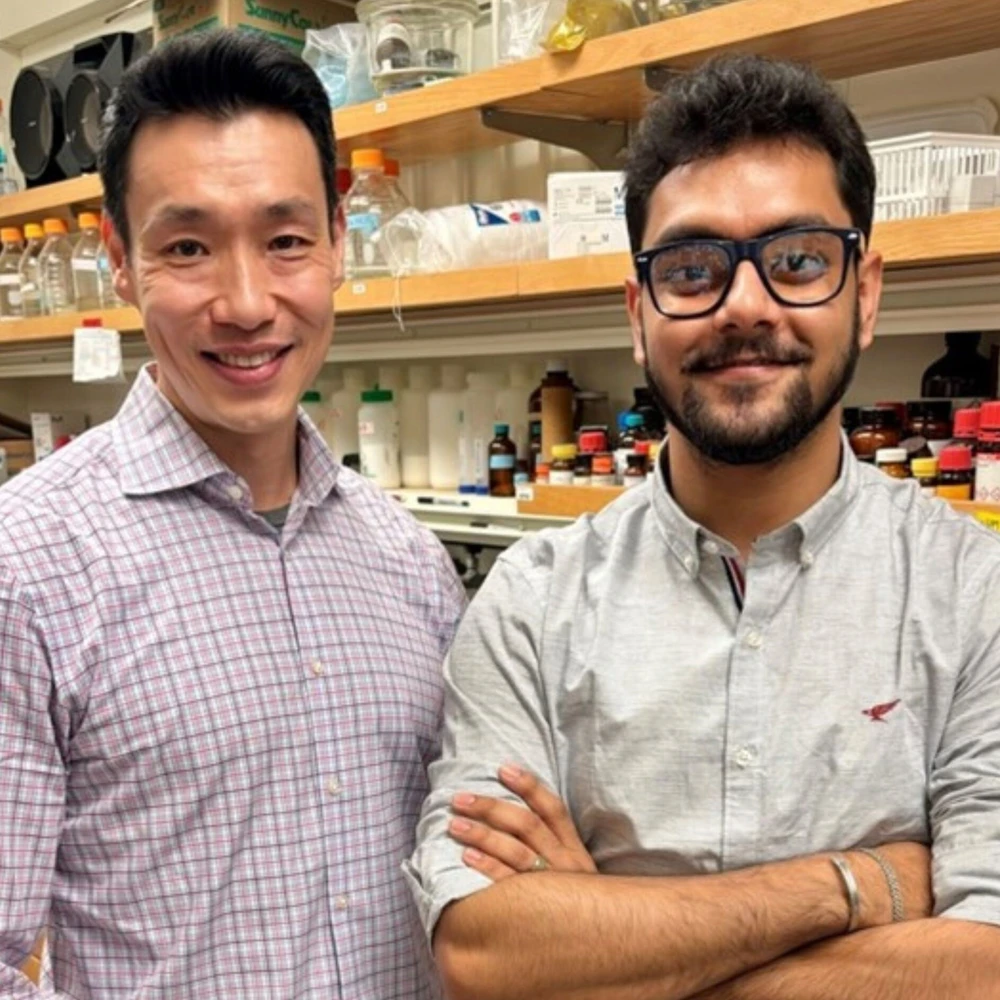
By Katie Brady, CCIL Communications Team
Cancer Center at Illinois (CCIL) member Jeff Chan, associate professor of chemistry, recently published research demonstrating the development of an activatable cancer therapeutic to help eliminate the side effects of traditional chemotherapies.
“There are many potent anticancer drugs available, but one of the major issues is that they are often ‘one size fits all.’ This can lead to collateral damage in healthy tissue and contribute to severe side effects during treatment. Our approach utilizes chemistry to develop molecules eligible for activation by both external light irradiation and cancer biomarkers to cause toxicity only at the cancer site,” said Chan.
Chan’s research focuses on improving drugs for Photodynamic Therapy (PDT), a clinically approved therapeutic technique. PDT can be used as a standalone therapy, as an adjuvant alongside other therapeutics, or during surgical tumor removals to ‘clean up’ any remaining cancer cells to help prevent relapse.
“In PDT the patient is given a drug molecule called a photosensitizer, which is generally non-toxic. It accumulates over time in the tumor, and then the clinician shines an external light from a laser or LED light source on the tumor sites. The photosensitizer changes oxygen into a toxic form in the illuminated areas, which can kill cancer cells,” explained Suritra Bandyopadhyay, a PhD student in Chan’s lab and the first author of the publication.
To further improve the cancer selectivity of PDT, they designed a photosensitizer which requires a second layer of activation beyond light to unlock drug toxicity in cancer cells. “The best analogy is that our photosensitizer molecules have a ‘lock’ that renders them inactive until they interact with a specific cancer biomarker, which is the ‘key.’ Cancerous cells and healthy cells have different keys, so you can’t unlock the toxic properties of the drug in the healthy tissue,” said Chan.
The biomarker they targeted is a small, short-lived molecule called nitric oxide (NO), which is present at higher levels in the tumor. When activated with both NO and light, their photosensitizer effectively suppressed tumor growth in two different mouse studies.
Bandyopadhyay reflected, “As a second year Ph.D. student, this is my first project, and I feel like I have been able to make a contribution to society, even if it is just a small one. When I look at the published paper and its data, it is exciting to think about the important implications of our research to hopefully help improve treatments for patients with cancer.”
Bandyopadhyay looks forward to building upon this research. He added, “The next step is to develop molecules that use ultrasound activation rather than light. Ultrasound can penetrate tissue better than light, so we can target tumors that are located deeper in the body.”
Editor’s notes:
Jeff Chan is an Associate Professor of Chemistry, an affiliate of the Department of Biochemistry and an Associate Professor with the Beckman Institute.
To contact Jeff Chan, email jeffchan@illinois.edu
The paper “Activity-Based Nitric Oxide-Responsive Porphyrin for Site-Selective and Nascent Cancer Ablation” is available online.
doi.org/10.1021/acsami.3c15604